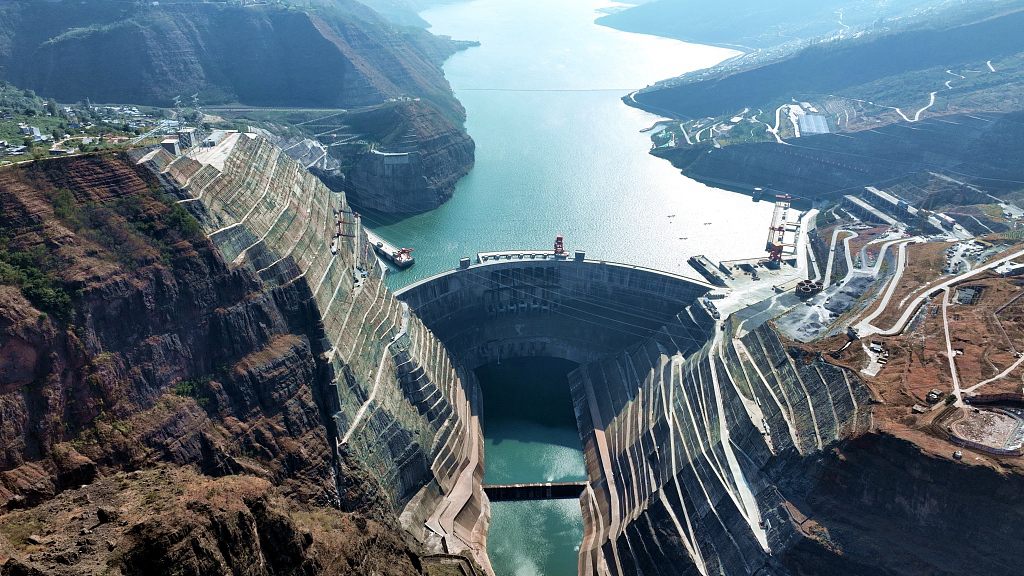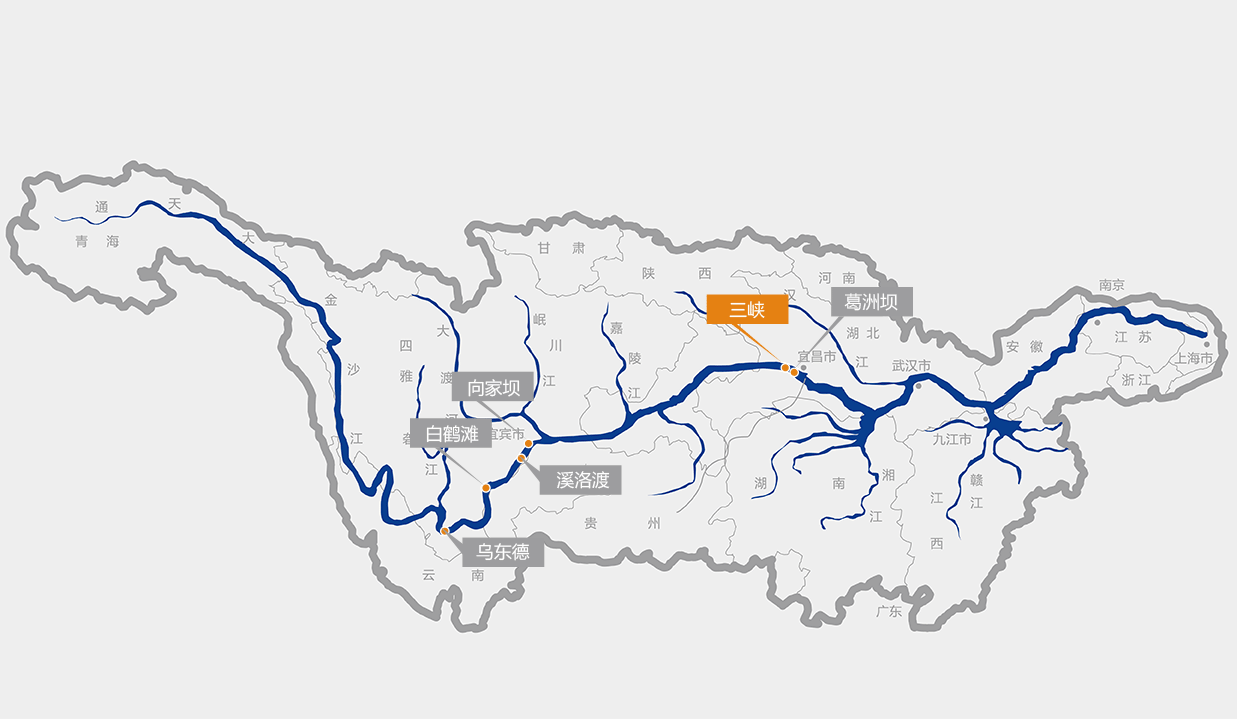
China's Baihetan Hydropower Station, southwest China's Sichuan Province, December 20, 2022. /CFP
China's Baihetan Hydropower Station, southwest China's Sichuan Province, December 20, 2022. /CFP
An 800-kV ultra-high-voltage direct current (UHVDC) transmission line between Baihetan Hydropower Station and east China's Zhejiang Province was recently put into operation at full capacity, marking another important project in the country's west-to-east power transmission program.
Facing a record heat wave, the full operation of the Baihetan-Zhejiang UHVDC transmission project is able to provide a strong guarantee for the power supply of Zhejiang and even east China this summer.
With a total length of 2,121 kilometers, the Baihetan-Zhejiang transmission line stretches from southwest China's Sichuan Province to Hangzhou City in Zhejiang Province. It is expected to transmit more than 30 billion kilowatt-hours annually, equivalent to the electricity needs of over 30 million people.
Along with it is the Baihetan-Jiangsu line, which was commissioned in July 2022. The two lines will be able to deliver about 60 billion kilowatt-hours of clean electricity to eastern China, saving 27 million tonnes of coal and helping reduce carbon dioxide emissions by 49 million tonnes.
Mega hydropower station only second to Three Gorges Dam
With a total installed capacity of 16 million kilowatts, Baihetan Hydropower Station is China's second largest hydropower station.
It is equipped with 16 hydro-generating units, each with a capacity of 1 million kilowatts. Its first batch of units started generating electricity on June 28, 2021. All the 16 units were put into operation in December last year.
Straddling southwest China's Yunnan and Sichuan provinces, the Baihetan Hydropower Station is located on the Jinsha River, the upper section of the Yangtze River.
It is a spectacle of engineering on the river, which uses an ultra-high double-curvature arch configuration with a maximum height of 289 meters and an arc length of 709 meters. It is located in the river valley where the hydrostatic pressure can be spread out to the rocky mountains on the sides it connects to.
Such a design also effectively saves construction material while improving safety. The dam consumed about 8 million cubic meters of low-heat cement.
Buried inside the dam are 3 million meters of cooling water pipelines. With the help of more than 10,000 sensors and advanced technologies such as the Internet of Things, cloud computing and intelligent control, the hydropower station can conduct self-diagnosis of malfunctions and send out abnormal temperature or flow alarms.
As a water conservancy project, Baihetan Hydropower Station also needs to discharge flood waters in flood season.
In the underground chambers on its left bank, there are three non-pressure spillway tunnels. Each tunnel is able to withstand a maximum discharge of 4,083 cubic meters per second, and water can pass through at a speed of 180 kilometers per hour.
These three tunnels form the world's largest cluster of non-pressure spillway tunnels.
A 1,800-km-long clean energy corridor

The world's largest clean energy corridor, spanning 1,800 kilometers. /China Yangtze Power Co., Ltd.
The world's largest clean energy corridor, spanning 1,800 kilometers. /China Yangtze Power Co., Ltd.
The hydropower station began full operation in last December, marking the completion of the world's largest clean energy corridor, which consists of five other mega hydropower stations on the Yangtze River, namely Wudongde, Xiluodu, Xiangjiaba, Three Gorges Dam and Gezhouba.
The clean energy corridor, spanning 1,800 kilometers, harbors 110 hydropower units, which contributes to a total installed capacity of 71.695 million kilowatts and an average annual electricity production of about 300 billion kilowatt-hours.
It can meet the annual electricity demands of 360 million people, effectively alleviating power shortages in central and east China, and providing strong support for the safe and stable operation of the power grid and the country's west-to-east power transmission program.
The electricity produced by the corridor replaces substantial production via fossil fuels.
The Baihetan station alone can save about 19.8 million tonnes of standard coal every year and reduce about 51.6 million tonnes of carbon dioxide emissions.
Together, the six hydropower stations can save about 90.45 million tonnes of standard coal and reduce carbon dioxide emissions by about 248 million tonnes per year, playing a positive role in improving China's energy structure, as well as in flood control, shipping, water resources utilization and ecological security in the Yangtze River Basin.